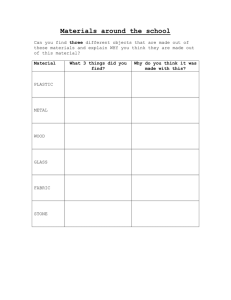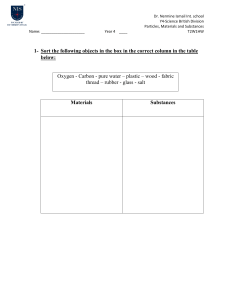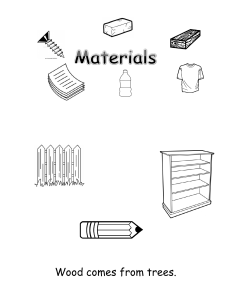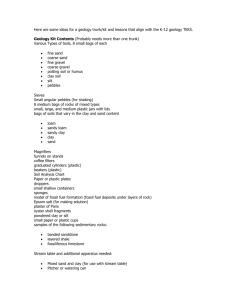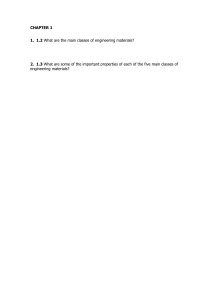Grade 4 Natural Sciences: Raw & Manufactured Materials Worksheet
advertisement
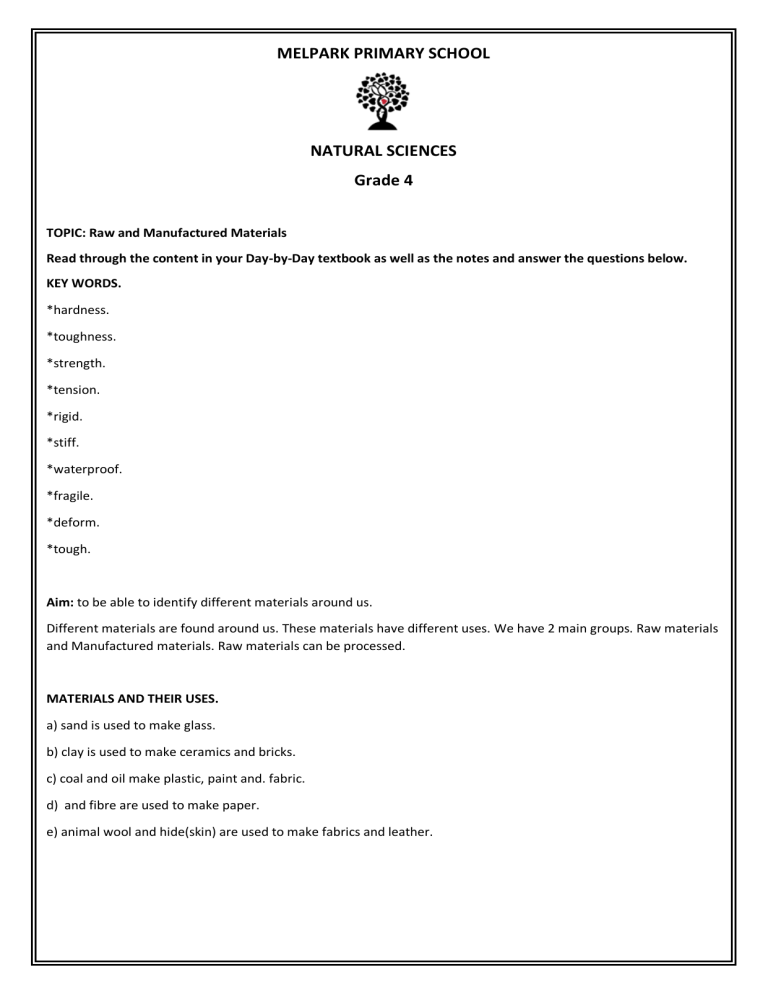
MELPARK PRIMARY SCHOOL
NATURAL SCIENCES
Grade 4
TOPIC: Raw and Manufactured Materials
Read through the content in your Day-by-Day textbook as well as the notes and answer the questions below.
KEY WORDS.
*hardness.
*toughness.
*strength.
*tension.
*rigid.
*stiff.
*waterproof.
*fragile.
*deform.
*tough.
Aim: to be able to identify different materials around us.
Different materials are found around us. These materials have different uses. We have 2 main groups. Raw materials
and Manufactured materials. Raw materials can be processed.
MATERIALS AND THEIR USES.
a) sand is used to make glass.
b) clay is used to make ceramics and bricks.
c) coal and oil make plastic, paint and. fabric.
d) and fibre are used to make paper.
e) animal wool and hide(skin) are used to make fabrics and leather.
PROPERTIES OF MATERIALS.
Raw materials and manufactured materials have specific properties. These include:
Hard or soft.
Strong or weak.
Stiff or flexible.
Light or heavy.
Water proof or absorbent.
WORKSHEET 1.
1. Why is it important to process materials?
2.Name the products we get from these Raw materials:
2.1 sand.
2.2 clay.
2.3 animal hide.
2.4 wool from sheep.
3.Describe the properties of these:
3.1 sand.
3.2 leather.
3.3 glass.
3.4 clay.
CLASSIFY THE MATERIALS BELOW UNDER RAW OR MANUFACTURED MATERIALS.
4.Water melon. Glass. Duck feathers. Gold coins. Uncut and unpolished diamond. Pot made from clay. Plastic
shopping bag. Wood from a willow tree. Sand. Toilet paper. Books.
5.Why is it important to recycle materials?
6. Does your school have a recycling project?
7.DRAW A TABLE.FILL IN THE RELEVANT INFORMATION:
PROPERTIES OF MATERIALS. (USE THESE TERMS STIFF/FLEXIBLE.)
7.1. Rubber. Glass. Wood. Plastic material. Fabric. Wool.
8. If I have 3 rulers made from different materials. A wooden, a plastic and a metal ruler.
8.1 Which ruler is the most flexible?
8.2 From the 3 rulers identify the stiff one.
9. Identify different materials, state their uses and origin.
EXAMPLE:
Chair{wood....comes from trees)
9.1 fabric.
9.2 plastic chairs.
9.3 Aluminium garden furniture.
10.What is the difference between a tennis ball and a cricket ball?
11.Describe the materials used to make each type of ball.
Use these terms to describe the two balls.
Furry. Tough. Light. Hard. Heavier. Smooth. Shinny. Rough. Flexible.
WORKSHEET 2.
REVISION EXERCISE I.
RE VISIT ALL THE WORK COVERED AND ANSWER ALL THE QUESTIONS.GIVE MEANINGFUL ANSWERS.
1. Match column A and B. Write the correct alphabet letter.
Column A
RAW MATERIALS
1. Sand
2. Clay
3. Coal and Oil
4. Animal Wool
5. Animal Hide
6. Wood and Plant fibre
Answer
Column B
MANUFACTURED MATERIALS
a. Ceramics
b. Leather
c. Glass
d. Paper
e. Plastic
f. Fabric
2. Which term is used for material that is not flexible?
3. What is the opposite of absorbent?
4. Choose a material you would use to build a dog kennel. State at least 2 properties of each material you have
chosen. How are these properties going to help in making the named animal man made structure safe from
weather elements?
